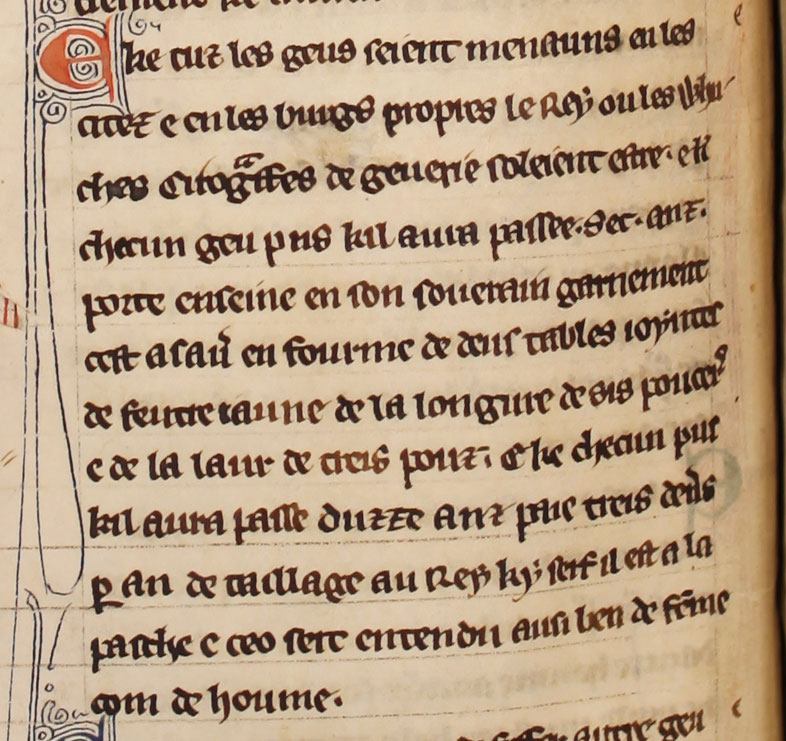
Extract (b) of the Statute of Jewry, c. 1275. Catalogue ref: E 164/9, fol. 31d.
Anglo-Norman Transcript
E ke tus les Geus seient menauns en les citez e en les burgs propres les Rey, ou les Whuches Cirograffes de Geuerie soleient ester: e k[e] checun Geu pus kil avra passee set anz, porte enseine en son soverain garnement cest assav[et] en fourme de deus tables joyntes de feutre iaune de la longure de sis poucer[is] e de la laur de treis pou[tz]. E ke checun pus kil aurta passe duzze anz paie tres den[ers] p[re] an de [taillage] au Rey [ky serf il est] a la Pasche e ceo seit entendu ausi ben de fem[m]e con de houme.
Simplified Translation
And that all Jews shall stay in the king’s own cities and boroughs, where the Chests of Chirographs of the Jewry are. And that each Jew after he turns seven years old, shall wear a badge on his clothes; that is to say, in the form of two tables joined, of yellow felt, of the length of six inches, and of breadth three inches. And that each one, after he shall be twelve years old, pay three pence yearly at Easter of tax to the king […]; and this is the same for both women and men […]
Read Extract (b) of the Statute of Jewry, c. 1275 and consider the accompanying questions:
- What three rules are introduced in this extract?
- The chests of chirographs kept records of Jewish loans. Why do you think the king wanted to restrict Jews to cities and boroughs where these chests were located?
- Why do you think King Edward I wanted Jewish individuals to wear a badge?
- What does this extract suggest about attitudes towards Jewish women in 1275?
